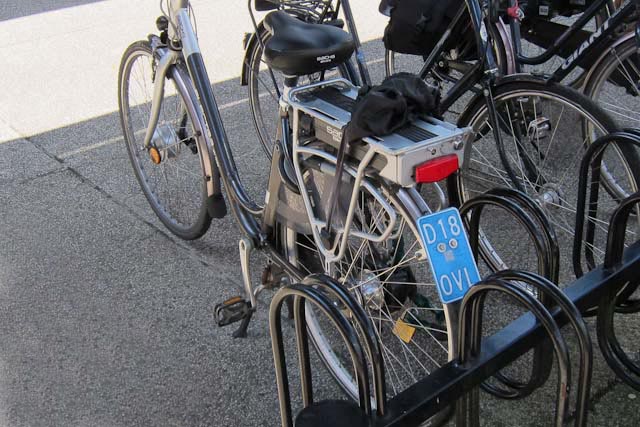When is the e-bike still a bike?
Being a cycling nation, the Dutch have come up with creative bike solutions to deal with the problems of traffic congestion and pollution. On a Dutch cycle path you’ll see all types of bikes from the traditional oma fiets to the streamlined velomobile, from the bulky cargo bike to the speedy electric bike. But can our cycle paths cope with such a diverse fleet of bikes?
The rising number of accidents with e-bikes - some of which can go up to 45 km/h - is causing much concern. Is the e-bike a curse or a blessing? Find out in our series High speed on cycle paths. Part 2: When is the e-bike still a bike?
 When is an e-bike still a bike? Photo © Holland-Cycling.com
When is an e-bike still a bike? Photo © Holland-Cycling.com
High-speed e-bike
It looks like and ordinary e-bike, but it can reach speeds up to 45 km/h. An ideal alternative to the car, say enthusiastic high-speed riders using it for their daily commute. A menace, say regular cyclists who feel the increasing speed difference between users is making cycle paths more dangerous. The question whether high-speed e-bikes belong on the cycle path is not just a practical, but also a legal problem. Are high-speed e-bikes still considered to be a bicycle and do the same laws apply?
Legally bikes with pedal assistance are not allowed to go faster than 25 km/h. However, thanks to a loophole in the law, e-bikes have come on the market whose speed meets the legal requirements as long as the rider is sitting still, but with additional pedalling their speed can go up to 45 km/h. These bikes are commonly known as a speed pedelec or a high speed pedelec.
Legal status
Traditionally, a distinction is made between human-powered and motorised vehicles. In order to have the legal status of a bike - and there are many reasons why you would want this - an e-bike needs to have electric pedal assistance only - in other words, the power supply has to stop when the cyclist stops pedalling. In addition, the pedal assistance needs to turn off when the cyclist reaches the maximum speed of 25 km/h. At higher speeds the riders has to do all the work himself, just like on an ordinary bike.
Speed pedelecs or high speed pedelecs don’t meet these requirements, so in Holland they’re legally not classed as a bike, but as a light moped or a moped (the Dutch Vehicle Licensing Authority RDW decides this per model). This means the traffic laws for either a light moped or a moped apply. These differ fundamentally from those for a bike and there are more restrictions.
Speed limit
Everyone, young and old, is allowed to ride a bike. But to drive any kind of moped, the rider needs to be over 16 years of age and have a moped licence. The vehicle needs to have a registration plate and be insured. A helmet is compulsory on a moped, but not on a light moped. Light mopeds are allowed on the cycle path unless specified otherwise, but in built-up areas mopeds have to ride on the road between heavier and faster traffic.
Another difference is that there are no speed limits for regular bikes. The idea is that cyclists can’t be expected to know how fast they’re going as a speedometer is not compulsory. A speedometer is compulsory on (light) mopeds and all riders have to adhere to speed limits, even when driving on the cycle path. This law, which seems perfectly logical, has one unexpected consequence: if you’re going faster than 25 km/h on a cycle path on your e-bike, you may be fined for speeding, while a cyclist overtaking you on an ordinary bike won’t as he isn’t considered to be speeding.
High-speed e-bikes, having the legal status of a (light) moped, are allowed - under certain circumstances - to ride on the cycle paths. But is it safe or desirable? To investigate this problem, the Dutch Cyclists’ Union asked cyclists in December 2013 what they think of these high-speed e-bikes. Are they a threat or an opportunity? This has triggered a heated debate, which we will look into in part 3.
Legal status |
Types of e-bikes |
Legal regulations |
| Bike |
E-bike with pedal assistance up to 25 km/h |
|
| Light moped (max. 25 km/h) |
E-bike with pedal assistance over 25 km/h and classed by RDW as light moped
|
|
| Moped (max. 45 km/h) |
E-bike with pedal assistance over 25 km/h and classed by RDW as moped E-bike with electric motor that works without pedalling and can go faster than 25 km p/h (power-on-demand electric bike) |
|
High speed on cycle paths series: |
Update 2017
New laws for the speed pedelec were introduced in 2017. For more, go to: New laws for speed pedelec in 2017.

